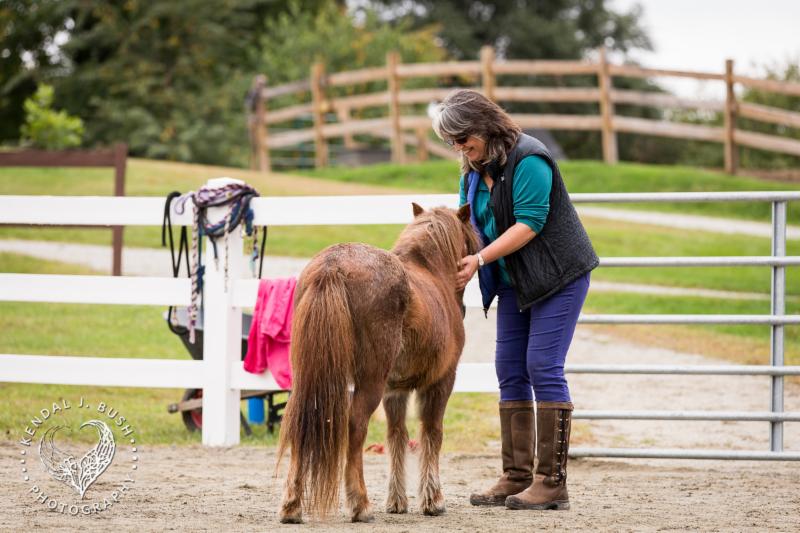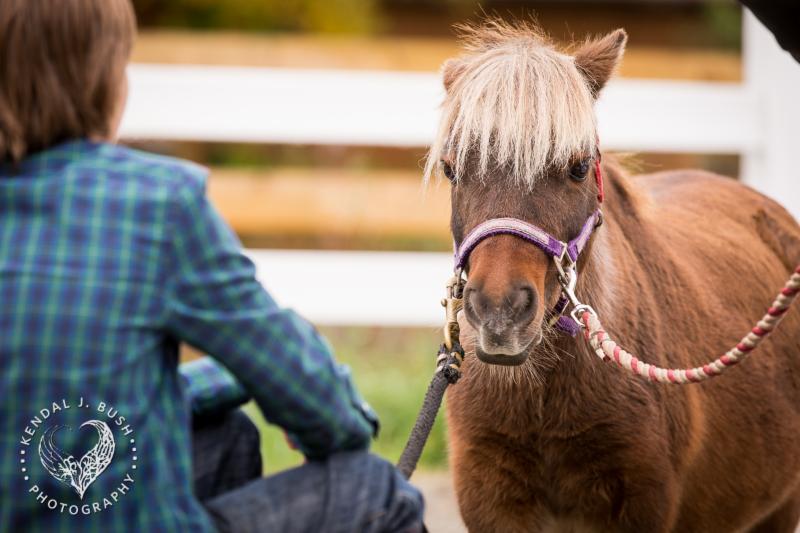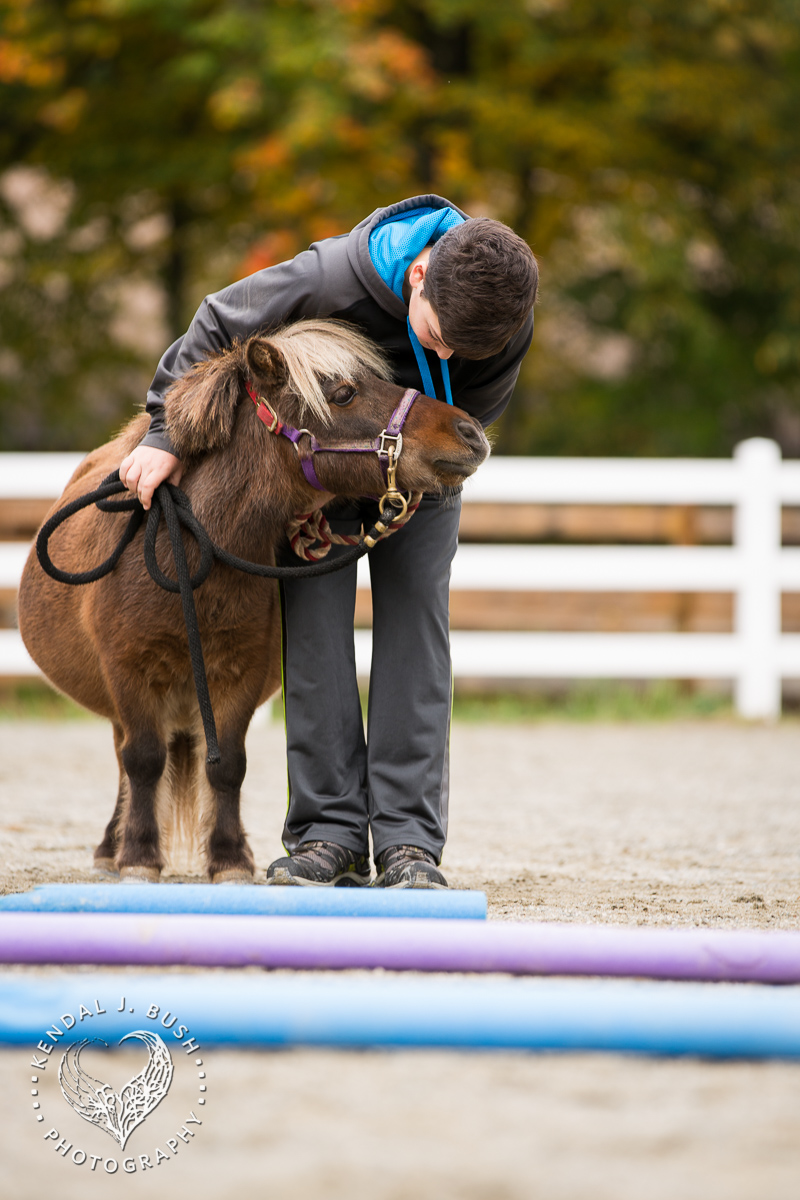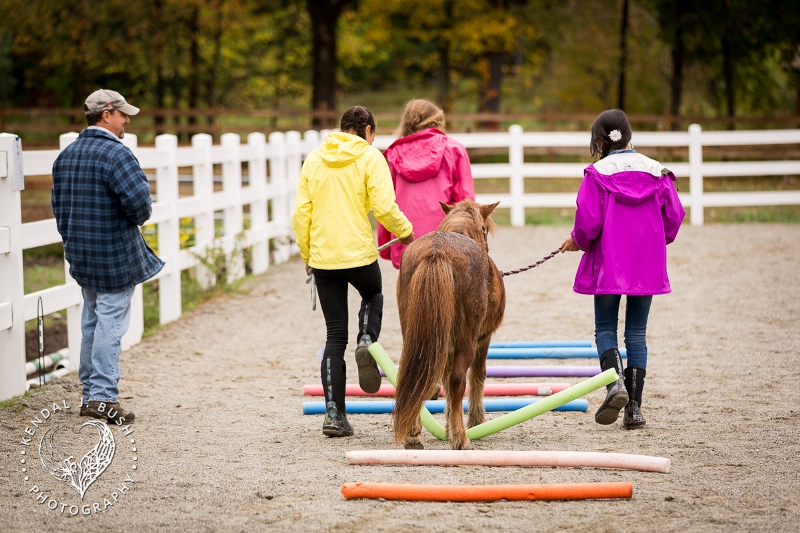By Barbara Thorngren
Photos by Kendal J. Bush Photography
August, 2015
This post has been moved from its original location at PeerSpirit.com and archived here, so you can continue to access it.
This month’s Circle Tale explores circling up with young people and horses, and is written by Barbara Thorngren, M.Ed. Barbara lives in southern New Hampshire. She is a Collaborative Education Consultant and an Equine Specialist who enjoys many forms of experiential education especially when it includes the creative arts! The foundation of her work is The Circle Way process.
Last fall, I was contacted by a 7th grade teacher from a local private school asking if I could help with some conflict situations she was experiencing with her students. As a Collaborative Education Consultant, I had worked with this school in the past offering experiential conflict-resolution activities with circle as a foundational element.
Since I had been working with horses at a local farm studying Equine Assisted Learning and designing a new program called Horse Wisdom, Transforming Power and the Creative Process, I proposed to the teacher that we try the program.
The 7th grade teacher was intrigued by the prospect of bringing the 10 students to the local horse farm for weekly, two-hour sessions with a mini herd of horses. The teacher and I worked together to create six weekly themes, identify issues, set goals, and to create lesson plans. The mini herd supported the learning goals through experiential educational experiences; this is Equine Assisted Learning.
We began our first session by exploring agreements. How did we want to work together as a group on the farm? What was important to the students? What was important to the mini herd? What were the behaviors that would help make their experience at the farm successful? The class brainstormed the following list of agreements:
- Be Respectful
- Do not be too loud
- Listen to each other and horses
- Stay in our group
- Be mindful of sudden movements
- Be aware of our surroundings
- Be mindful of others
- Be gentle
- Be aware of other people’s feelings
- Be kinder than necessary!
- Have FUN!
Each session began in the classroom on the farm with a check-in. Students learned how to take turns listening without interrupting or making remarks while others spoke. They focused on speaking respectfully. This helped build caring relationships that continued into the arena with the horses.
From the classroom check-in, the students moved to the arena to work with one mini donkey, two mini horses and a small pony in an activity we had designed.
The last 40 minutes each week was spent back in the farm classroom debriefing silently. The students were seated around tables, given paper and crayons/markers/pens, and asked to create marks and shapes on the paper that represented their experiences in the arena. It was not about making a pretty picture, but rather documenting an experience. To my surprise they entered into this activity willingly and were eager to share with their classmates what they created in our closing circle.
An example of an activity
One sunny afternoon, we divided the class in half. The activity was for each group to move one of the minis from one side of the arena to the other side without touching their little horse. One team quickly organized themselves and began to move collectively around their mini across the arena with great success.
The other group began to chatter very loudly all at the same time as they closed in around their mini. The mini was not impressed and stood his ground. He flattened his ears, barred his teeth and spun around making his displeasure known to the group. The team of girls gasped! At that moment I asked them what was happening with their planning and their mini and if this type of situation has ever happened before. They shared that this had happened to them frequently in the classroom, everyone talking at once, no plan and no one listening. I asked them to replay the activity. They respectfully discussed a plan of luring the mini across the arena with grass. Quickly they organized themselves to collect grass for their mini while moving across the arena. It worked! They were excited when they all reached the other side and cheered at their success. They celebrated with apples and laughed as the mini galloped with his little legs.
During our activity time, we would often “circle-up” in the center of the arena: two-legged and four-legged alike. On the last day our “circle-up with the minis” included sharing apples and carrots for all. I reflected on the power of the herd: how the desire to collaborate well with the minis had helped them overcome prior social challenges.
The students' final paintings reflected the joy they experienced with their new friends, the mini herd. With their experience of working in different groups each week, collaborating, team-building, problem-solving etc., the class found a new way of being together. Their teacher reported that the experience with the minis held over into the classroom and a more flexible, tolerant class environment developed that celebrated their differences and embraced new challenges.
For more information about Equine Assisted Learning, check out these websites:
Certified Equine Experiential Education Facilitator – Equine Experiential Education Association (www.e3assoc.org)
Certified Equine Specialist in Mental Health and Learning – Professional Association of Therapeutic Horsemanship (www.pathintl.org)
Certified Equine Specialist – Equine Assisted Growth and Learning Association (www.eagala.org)




